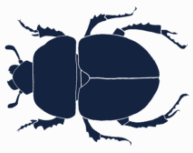Or: The Art of Being Content
I was playing around with some materials for my next series today, and was reminded of the idea of failed experiments.
Is there such a thing when it comes to art? I get it in science; you have a thesis, you set out to prove it, it didn’t work, you have to rethink and start again.
Like Edison and the lightbulb: “I didn’t fail 1000 times. The lightbulb was an invention with 1000 steps.”
Which really isn’t a failure, because you learn something new every time.
It is the same in art. I played around with some watercolours on rice paper (which is very thin), and managed to break the paper. I crinkled it, ripped it and overall just made a big mess. Then I thought “what if I put down a layer of pastels first”, which made the watercolours a bit muddled, but at the same time let the paint float on the surface for a bit which gave a nice effect. I then added a bit of pastels on top of that, and the effect was quite good. It gave me a lot of new ideas.
Which brings me to the content part. I struggle with this concept of just being content. I always want to be more. Great. Perfect. Excellent. Content just sounds so average. But it really isn’t a bad thing.
So I choose to be content with my experiments today. Instead of thinking of it as a failure or a waste of time, I will think of it as learning, and be content that I discovered a quality of the rice paper/watercolour/pastel mix that I didn’t know before. I will see it as practice and development and taking small steps. I will be content with not making a masterpiece, but rather a stepping stone to a future masterpiece.
And when I, sometime in the future, make my masterpiece, I will be content with that too.







